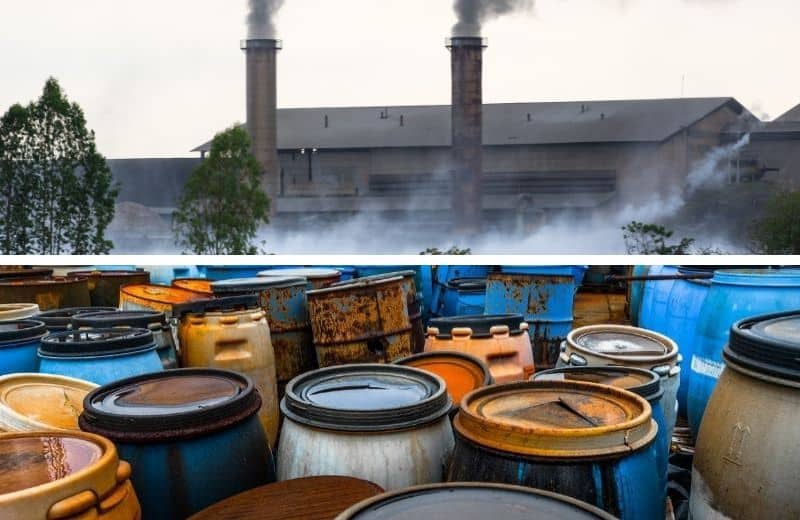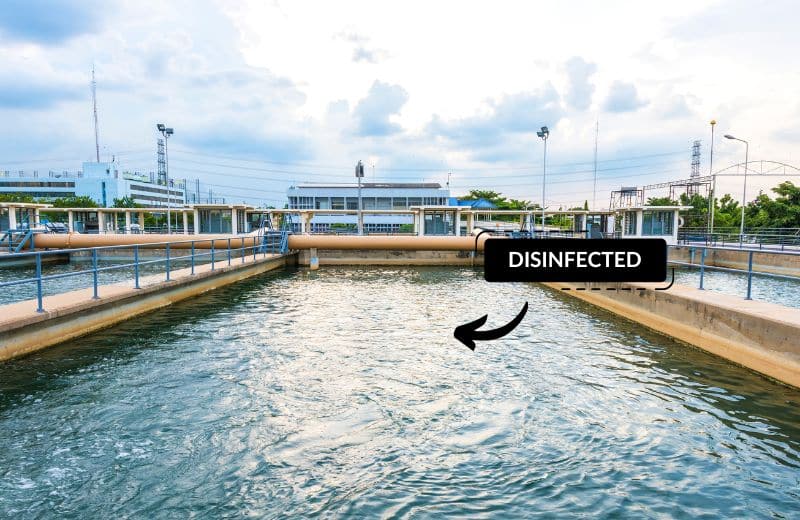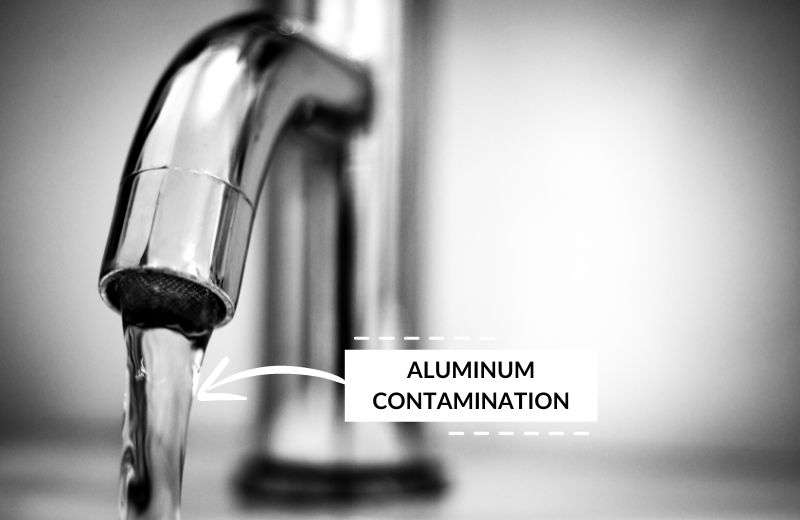Wondering whether you can safely drink the tap water in Anchorage, AK? Is Anchorage tap water considered good quality, and how does it compare to the water in other states and cities? Should you be aware of any contaminants present in dangerous or illegal levels in Anchorage drinking water?
Read on to discover the answers to these questions and more.
📌 Key Takeaways:
- Anchorage tap water is considered generally safe and reliable drinking water.
- Utilities treating the drinking water in Anchorage must legally comply with standards set by the Environmental Protection Agency (EPA).
- The 7 biggest problem contaminants in Anchorage tap water are arsenic, disinfection byproducts, chromium-6, nitrate, nitrite, and radium – but none of these exceed legal limits established by the Safe Drinking Water Act.
Table of Contents
- 🚰 Can You Drink Anchorage Tap Water?
- 🗺️ Where Does the Tap Water in Anchorage Come From?
- 📉 Who Regulates Anchborage Drinking Water?
- 🧪 Anchorage Annual Water Quality Report
- ☣️ Contaminants Found Above Guidelines in Tap Water in Anchorage
- 🧫 Main Contaminants Found in Anchorage Tap Water
- 💬 Frequently Asked Questions
🚰 Can You Drink Anchorage Tap Water?
Yes, you can drink Anchorage tap water. The water in Anchorage, like all other public drinking water supplies in the country, is regulated by guidelines set by the Environmental Protection Agency (EPA), meaning that it’s safe to drink.
According to the City’s most recent Water Quality Report, tap water in Anchorage doesn’t violate any Maximum Contaminant Levels (MCLs) established by the EPA, so it’s technically clean and shouldn’t cause any health risks.
However, that doesn’t mean that Anchorage has pure or perfect-quality water. Some contaminants are still present in trace levels – they just don’t exceed the EPA’s MCLS.
Some organizations, such as the Environmental Working Group, believe that even trace amounts of certain contaminants may be dangerous to drink. The EWG has produced its own Tap Water Database for Anchorage, and in this database, 12 contaminants were found to exceed the EWG’s own Health Guidelines.
Keep in mind that the EWG is simply an independent organization. Unlike the EPA, it doesn’t have the power to enforce its guidelines as laws – so local authorities don’t need to reduce their contaminant levels to below EWG levels. However, you might agree with the EWG that the EPA’s own Maximum Contaminant Levels are too high.

So, what does this mean? Tap water in Anchorage is safe to drink according to EPA standards, but it’s not safe to drink according to EWG guidelines. We’ve shared more info on the 12 contaminants highlighted by the EWG later in this guide.
Also note that not all contaminants in drinking water are currently regulated by the EPA. There are several disinfection byproducts and emerging contaminants like PFAS that don’t currently have legal limits – although this could change in the future.
👨🔧 Wondering which states have the poorest-quality drinking water? Find out in this article.
Anchorage SDWA Violations Within 10 Years
| Period of Compliance | Resolved? | Health-Based? | Category Code | Code | Rule Code | Contaminant Code | Rule Group Code | Rule Family Code |
|---|---|---|---|---|---|---|---|---|
| 01/01/2018- 03/31/2018 | Yes | No | Monitoring and Reporting (MR) | Monitoring and Reporting (DBP) (27) | Stage 1 Disinfectants and Disinfection Byproducts Rule (210) | CARBON, TOTAL (2920) | Disinfectants and Disinfection Byproducts Rule (200) | Stage 1 Disinfectants and Disinfection Byproducts Rule (210) |
| 11/01/2017- 01/31/2018 | Yes | No | Monitoring and Reporting (MR) | Monitoring and Reporting (DBP) (27) | Stage 2 Disinfectants and Disinfection Byproducts Rule (220) | TTHM (2950) | Disinfectants and Disinfection Byproducts Rule (200) | Stage 2 Disinfectants and Disinfection Byproducts Rule (220) |
| 11/01/2017- 01/31/2018 | Yes | No | Monitoring and Reporting (MR) | Monitoring and Reporting (DBP) (27) | Stage 2 Disinfectants and Disinfection Byproducts Rule (220) | Total Haloacetic Acids (HAA5) (2456) | Disinfectants and Disinfection Byproducts Rule (200) | Stage 2 Disinfectants and Disinfection Byproducts Rule (220) |
| 01/01/2016- 12/31/2016 | Yes | No | Monitoring and Reporting (MR) | Monitoring, Regular (03) | Nitrates (331) | Nitrate (1040) | Chemicals (300) | Inorganic Chemicals (330) |
Data Source: EPA ECHO database
🗺️ Where Does the Tap Water in Anchorage Come From?
The drinking water in Anchorage comes from two surface water sources:
- Eklutna Lake (Fed by the glaciers and snowfields of the Chugach Mountains)
- Ship Creek watershed
The City’s tap water is also sourced from several groundwater wells in the following areas:
- The Anchorage Bowl
- The Northern Communities
- Girdwood Valley
Eklutna Lake is the primary water source for the Anchorage area, delivering around 86% of water to the community. Ship Creek and the remaining wells are used to augment the water supply in times of peak demand.
What should you know about water from a ground-level or surface source? There’s a greater risk of contamination and pollution in surface water than in groundwater due to exposure to the elements. It’s more likely for this water to become polluted by air fallout and surface runoff. However, as long as surface water is properly treated, it should be just as clean and safe to drink as groundwater.
To ensure compliance with federal health standards, Anchorage tests around 3,000 water samples every year.
After being collected at the source, water is then transported to one of 2 water treatment facilities owned by the Anchorage Water and Wastewater Utility (AWWU).
At the Ship Creek and water plants, water treatment involves using processes like filtration, coagulation, flocculation, and sedimentation. Water is also disinfected to kill microorganisms and prevent recontamination as the water is stored in storage water reservoirs and sent up to 850 miles to reach homes and businesses in the City.
Anchorage’s treated groundwater supplies are naturally filtered, which means they don’t need such extensive processing. However, they’re still disinfected with hypochlorite to prevent microbiological contamination.

📉 Who Regulates Anchborage Drinking Water?
The drinking water in Anchorage is managed by the Anchorage Water and Wastewater Utility and is regulated by the Environmental Protection Agency (EPA).
Almost every single public water utility in the US is regulated by the EPA. To ensure compliance with the EPA’s guidelines, utilities must test and monitor their water supplies throughout the year.
The EPA has enforced National Primary Drinking Water Regulations, produced under the Safe Drinking Water Act, which shares the contaminants that must be regulated in water based on research into their potential health effects.
Like all other Cities, Anchorage must reduce concentrations of these contaminants to below EPA Maximum Contaminant Levels – and publicly share its testing data as proof to customers who drink tap water in the City.
🧪 Anchorage Annual Water Quality Report
The most recent Water Quality Report for Anchorage is dated from January to December 2021.
The Report, also known as an annual Consumer Confidence Report, details water quality information including:
- Where the water has been souced
- The contaminants detected in the water
- Whether these contaminants meet/exceed state and federal drinking water standards for water quality
The Report shows that in 2021, all detected contaminants in Anchorage drinking water were present at levels lower than the EPA’s Maximum Contaminant Levels, meaning that the City’s water is classed as safe to drink. However, there are still trace contaminants in Anchorage’s public water supply, so the water isn’t 100% healthy or clean.
For example, the EPA has a MCL of 4 PPM for chlorine in drinking water, but the highest level of chlorine detected in Anchorage drinking water was 3.90 PPM. So, while the chlorine levels in Anchorage’s water are within the EPA’s maximum allowance, this chemical is still present in large amounts – which could affect water quality.
Some of the contaminants detected in Anchorage’s tap water below EPA MCLs include:
- Chlorine
- Barium
- Chromium
- Fluoride
- Nitrate
- Lead
We’ve discussed these contaminants in more detail later in this guide.
The table of contaminants takes up just 1 page and only covers impurities that were detected in Anchorage’s water, so we can assume that most other chemicals and heavy metals weren’t detected and therefore weren’t applicable to include in the Report.
It’s worth remembering that a Water Quality Report shares data that’s only applicable to the given year (so, in this case, 2021). It’s possible that the EPA may introduce new guidelines or amend current guidelines as it continues to reevaluate its regulations and new evidence emerges on the potential health hazards of certain contaminants. At the moment, a number of contaminants aren’t regulated at all by the EPA, such as certain disinfection byproducts.
Read through Anchorage’s Consumer Confidence Report and familiarize yourself with the contaminants present and how their concentrations compare to the EPA’s MCLs. You might also want to look at Water Quality Reports from previous years to see whether the City’s water quality has changed over time.
| Term | Description |
|---|---|
| Period of Compliance | Time period which a violation took place and resolved. |
| Status | Indication of the most recent compliance status of the violation. Resolved: The system has returned to compliance from the violation Archived: The violation is not yet resolved, but is more than 5 years past its compliance end date. Addressed: The violation is not resolved nor archived, but addressed through formal enforcement. Unaddressed: The violation has not been addressed, resolved, nor archived |
| Health Based | Whether the violation affects health standards. |
| Category Code | Category of violation by which it is reported. TT: Treatment Technique Violation MRDL: Maximum Residual Disinfectant Level Other: Other Violation MCL: Maximum Contaminant Level Violation MR: Monitoring and Reporting MON: Monitoring Violation RPT : Reporting Violation |
| Code | A complete description of violation codes. |
| Contaminant Code | Represents a contaminant for which the municipal water system has incurred a violation against a primary drinking water regulation. |
| Rule Code | The National Drinking Water rule. 110: Total Coliform Rule 121: Surface Water Treatment Rule 122: Long Term 1 Enhanced Surface Water Treatment Rule 123: Long Term 2 Enhanced Surface Water Treatment Rule 130: Filter Backwash Rule 140: Ground Water Rule 210: Stage 1 Disinfectants and Disinfection Byproducts Rule 220: Stage 2 Disinfectants and Disinfection Byproducts Rule 230: Total Trihalomethanes 310: Volatile Organic Chemicals 331: Nitrates 332: Arsenic 333: Inorganic Chemicals 320: Synthetic Organic Chemicals 340: Radionuclides 350: Lead and Copper Rule 410: Public Notice Rule 420: Consumer Confidence Rule 430: Miscellaneous 500: Not Regulated 111: Revised Total Coliform Rule |
| Rule Group Code | Uniquely defines a rule group. 120: Surface Water Treatment Rules 130: Filter Backwash Rule 140: Groundwater Rule 210: Stage 1 Disinfectants and Disinfection Byproducts Rule 220: Stage 2 Disinfectants and Disinfection Byproducts Rule 230: Total Trihalomethanes 310: Volatile Organic Chemicals 320: Synthetic Organic Chemicals 330: Inorganic Chemicals 340: Radionuclides 350: Lead and Copper Rule 400: Other 500: Not Regulated 110: Total Coliform Rules 410: Public Notice Rule 420: Consumer Confidence Rule 430: Miscellaneous |
| Rule Family Code | Defines the rule family code. 100: Microbials 200: Disinfectants and Disinfection Byproducts Rule 300: Chemicals 400: Other 500: Not Regulated |
☣️ Contaminants Found Above Guidelines in Tap Water in Anchorage
Anchorage drinking water doesn’t contain any contaminants that exceed the EPA’s MCLs. So, we’ll be looking instead at the contaminants that meet EPA guidelines, but exceed guidelines set by the EWG.
As we mentioned earlier, the EWG doesn’t have any legal hold on any water utility in the US. But you might agree with the EWG that even trace levels of toxic metals and chemicals are dangerous in water.
In that case, you’ll be interested to know which contaminants exceed EWG guidelines in Anchorage’s tap water:
Arsenic
This drinking water contaminant is highly toxic and linked to health effects like cancer and skin lesions. The EWG has a recommended Health Guideline of 0.004 PPB (parts per billion) for arsenic. Water supplied by the Anchorage water utility contains 0.150 PPB of arsenic – that’s 37x the EWG’s recommendation. However, it’s still well within the EPA’s legal limit of 10 PPB.
Hexavalent Chromium
Hexavalent chromium, otherwise known as chromium-6, is a toxic drinking water contaminant that may cause liver and reproductive system damage, and often pollutes water supplies due to industrial activity. 0.585 PPB of chromium-6 was detected in Anchorage’s tap water – 29x the EWG’s recommended Health Guideline of 0.02. There is no official legal limit for hexavalent chromium presently.

Nitrate and Nitrite
Nitrate and nitrite are two forms of nitrogen that get into drinking water from leakage and runoff from wastewater, urban drainage, and landfills. If consumed in large amounts, they may cause increased heart rate, headaches, and nausea. The EWG’s Health Guideline for nitrate and nitrite combined is 0.14 PPM. 0.527 PPM was detected in Anchorage drinking water – 3.8x the Health Guideline but below the EPA’s legal limit of 10 PPM.
Radium (-226 & -228)
Two types of this drinking water contaminant – radium -226 and radium -228 – were detected in Anchorage’s tap water. Possible health effects of consuming high levels of radium include anemia, cancer, and depression of the immune system. The EWG’s recommended Health Guideline for radium -226 & -228 is 0.05 pCi/L (picoCurie per liter). 0.21 pCi/L of radium was detected in the Anchorage water utility – 4.1 x the Health Guideline. The EPA has set a legal limit of 5 pCi/L for radium in drinking tap water.
Haloacetic acids (HAA5)† and Haloacetic acids (HAA9)†
When water is disinfected with chlorine, two haloacetic acids are often produced as byproducts: HAA5 and HAA9. 4.56 PPB and 4.43 PPB of these contaminants were detected in Anchorage tap water – that’s between 46x and 74x the EWG’s Health Guidelines of 0.1 PPB and 0.06 PPB. Currently, the EPA has enforced a legal limit of 60 PPB for HAA5, and HAA9 currently has no legal limit.
Total trihalomethanes (TTHMs)†
TTHMs (or trihalomethanes in full) are another common byproduct of chlorine water treatment, which have been linked to cancer and other potential health effects. The EWG detected 6.23 PPB of TTHMs in Anchorage tap water – 42x the EWG’s recommended Health Guideline of 80 PPB. However, these levels are still well within the EPA’s legal limit of 80 PPB for TTHMs.

Other Disinfection Byproducts
Several other disinfection byproducts, including trichloroacetic acid, dichloroacetic acid, bromodichloromethane, and chloroform were also detected in Anchorage drinking water above the EWG’s Health Guidelines. These impurities are found in water from sewage treatment plants and drinking water that contains a lot of chlorine. Between 0.400 PPB and 5.90 PPB of these impurities were detected – that’s between 6.7 and 19x the EWG’s Health Guidelines. None of these impurities currently have a legal limit.
This list tells us that the biggest water quality issue in the Anchorage public water supply is disinfection byproducts. This is a common issue across the country and is likely due to the following two reasons:
- Chemical disinfectants are commonly used as an affordable large-scale method of preventing water borne disease, and most disinfectants release byproducts.
- Many disinfection byproducts aren’t regulated by the EPA, so water utilities aren’t legally required to reduce or remove these drinking water contaminants.
Emerging research suggests that disinfection byproducts increase the risk of cancer and have other health concerns including liver damage and decreased nervous system activity. Thankfully, these impurities can be removed at home with a good water filter.
🧫 Main Contaminants Found in Anchorage Tap Water
Now we know which contaminants are present in potentially harmful levels in Anchorage drinking water – what about the rest?
Below, we’ve listed some of the Anchorage water contaminants found in levels that don’t violate EPA or EWG guidelines:
- Aluminum – A heavy metal that usually contaminates water from metal pipe leaching; may cause vomiting, nausea, diarrhea, ulcers, and skin rashes if consumed in excess; no long-term health effects.
- Antimony – A metal that’s found naturally in small quantities in rocks and soils; very high concentrations may cause short-term effects like vomiting, nausea, and diarrhea.
- Barium – A naturally occurring element that seeps into water that travels through certain igneous and sedimentary rocks; known to cause blood pressure fluctuations, abdominal cramping, breathing problems, and diarrhea if high levels are consumed.
- Disinfection byproducts like chlorate, dibromochloromethane, monobromoacetic acid, and monochloroacetic acid; produced when chlorine and other disinfectants react with naturally occurring organic matter in water; may cause liver damage and increased risk of cancer.
- Total chromium – Refers to both kinds of chromium compounds that may be present in a water supply: chromium-3 (harmless) and chromium-6 (dangerous; may cause cancer and damage the kidneys and liver if high levels are consumed).
- Fluoride – A naturally occurring mineral that is also produced synthetically and added to water supplies to reduce tooth decay and dental health problems; may cause skeletal fluorosis (a metabolic bone disease) and dental fluorosis (discoloration of the teeth) if large amounts are consumed.
- Manganese – A mineral found in rocks and soils that’s commonly known as a “water hardness mineral”; doesn’t pose a health risk but may lead to scale formation and other hard water effects if present in excess.
- Mercury (inorganic) – Mercury combined with sulfur, chlorine, and other elements to form inorganic mercury salts; may cause cardiovascular effects, renal damage, and digestive disorders if large amounts are consumed.
- Selenium – A trace mineral that usually occurs in water due to mining activity, natural deposits, and agricultural runoff; may cause hair loss, tooth decay, and skin discoloration if consumed in excess.
- Silver – A metal and chemical element that gets into water through surface water seepage and runoff; has no toxic effects in concentrations normally found in drinking water.
- Strontium – A naturally occurring heavy metal commonly found in minerals like calcium carbonate; may cause cancer with high-level exposure but is harmful when present in low levels.
- Vanadium – Occurs naturally in minerals and in numerous fossil fuel deposits; doesn’t pose any known health risks when naturally present in water.

💬 Frequently Asked Questions
How clean is Anchorage water?
Anchorage tap water is considered very clean with no overtly harmful impurities. Drinking water in the city is compliant with EPA regulations, which means the trace contaminants present don’t exceed the Maximum Contaminant Levels. However, you may prefer not to drink even trace levels of contaminants. In that case, consider installing a water filter.
What is the water quality in Anchorage Alaska?
The water quality in Anchorage, Alaska is good. Water in the City is treated to make it safe for human consumption before it’s sent into the distribution system. Anchorage tap water is chlorinated, which kills microbiological contaminants but may affect its taste and odor. You can further improve your water quality by installing an at-home water filtration system.
Where does Anchorage get its drinking water?
Anchorage gets its drinking water from two surface water sources – Ship Creek and Eklutna Lake – as well as several groundwater sources, including wells in Girdwood Valley, the Anchorage Bowl, and the Northern Communities. The quality of Anchorage’s water supply may vary depending on the water source, although drinking water generally undergoes the same treatment process before being distributed to homes.
Does Anchorage water have chlorine?
Yes, Anchorage water has chlorine because chlorine is the main disinfectant used to kill microorganisms in the water. Chlorine also prevents microbiological contaminants as water travels through the distribution system. However, a downside of chlorine is that it affects water’s taste and smell. It also reacts with naturally occurring organic matter in the water, producing disinfection byproducts, which have dangerous health effects including cancer. You can use solid carbon block filters to reduce chlorine (it also reduces volatile organic compounds and some disinfection byproducts).
Does Anchorage fluoridate its tap water?
Yes, like most Cities in the US, Anchorage fluoridates its local tap water. Community water fluoridation exists to minimize costs associated with dental treatment in the country, since fluoride protects the tooth enamel and reduces tooth decay. However, some folks are against the use of fluoride in water because of the potential health effects of this mineral. You can buy water filters that remove fluoride if you’re concerned.
